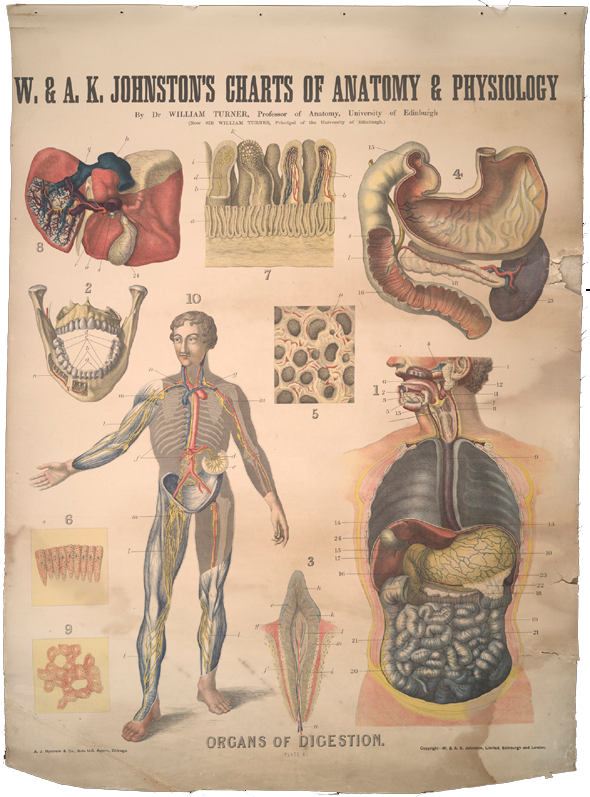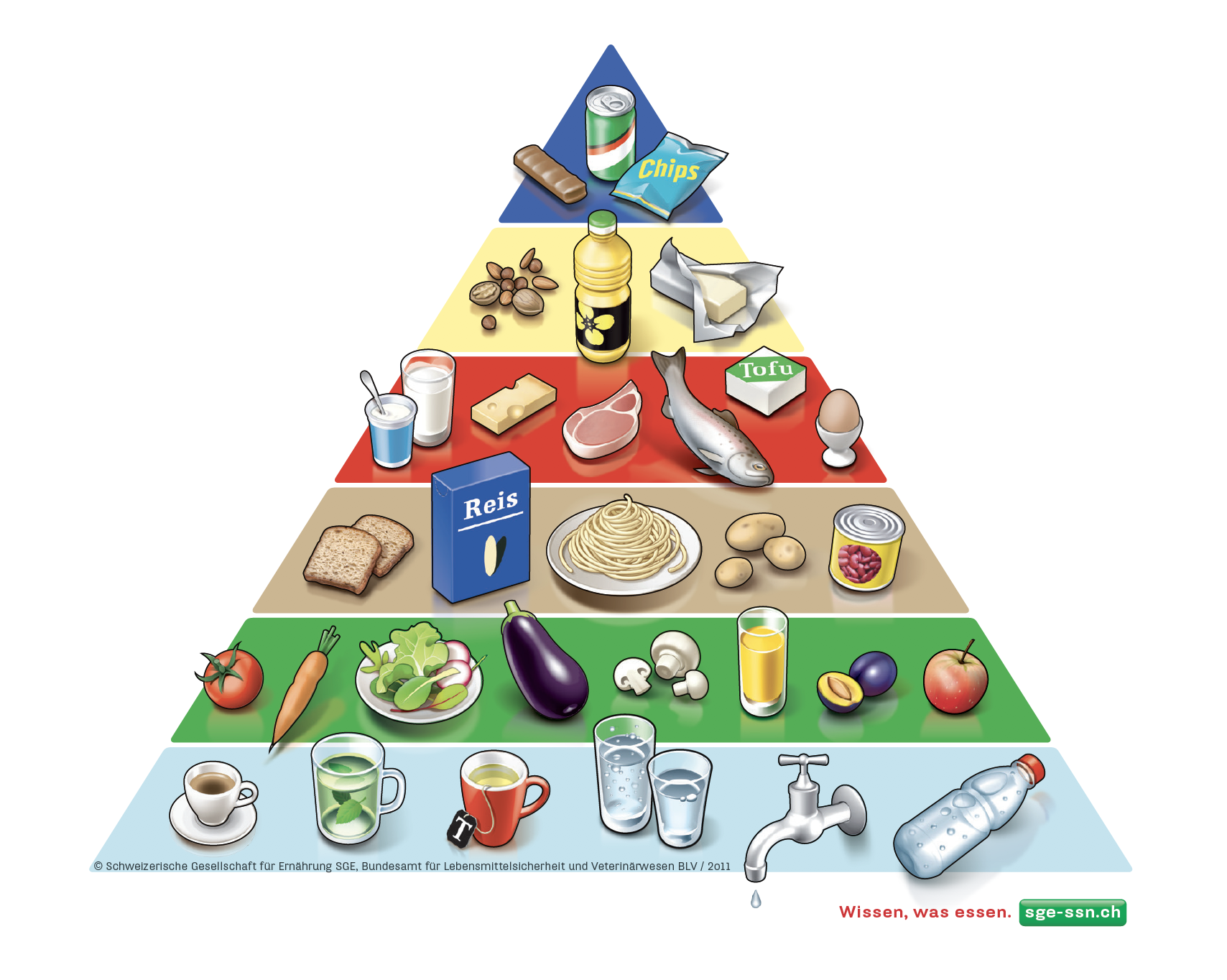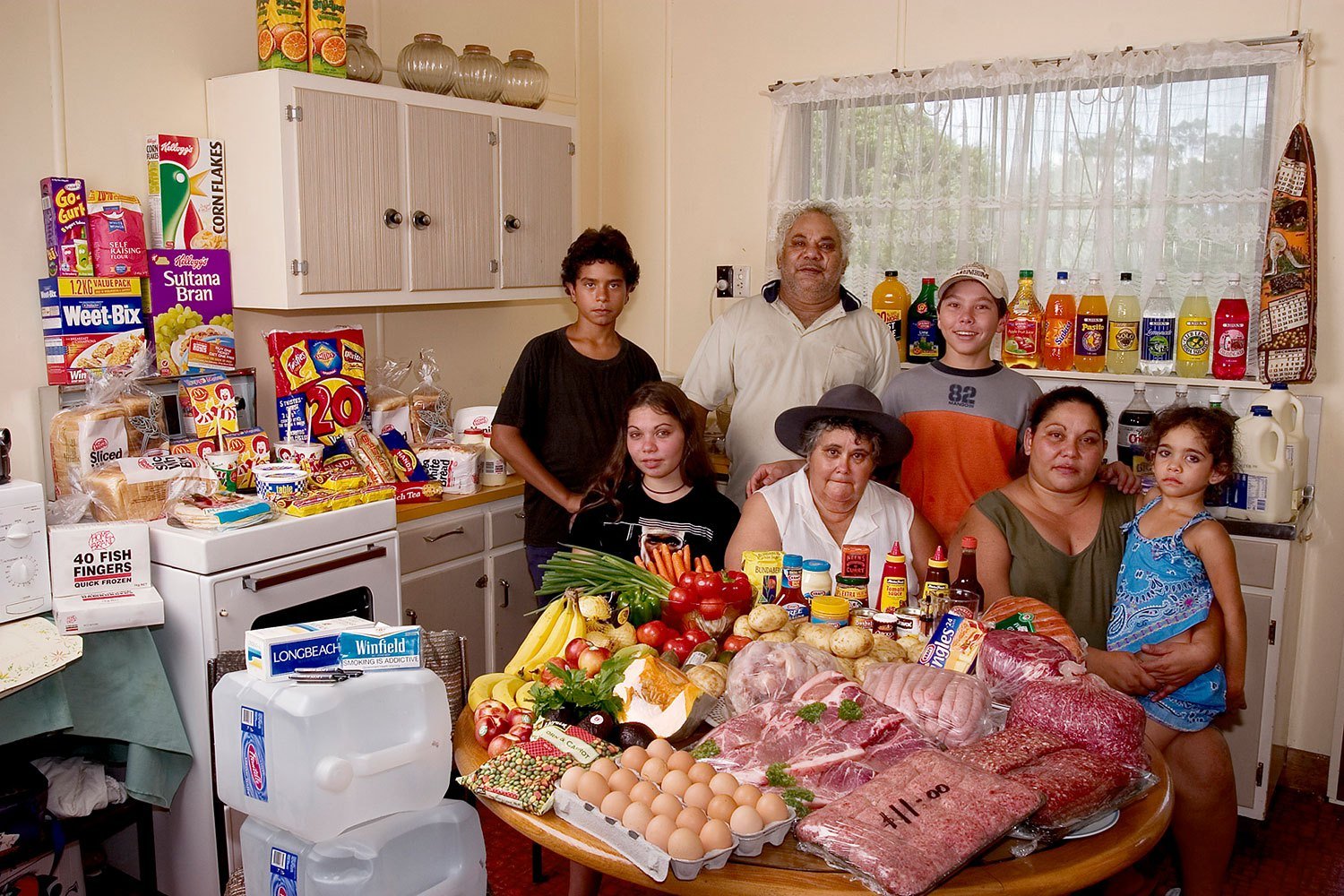Nutrition and the body
Act II: Eating
«We are what we eat» exists in nearly every language of the world and when looking at the microscopic composition of the human body definitely has truth in it. It is an indisputable fact that humans have to eat to survive. The digestive system transforms food into energy and nutritions that we have to supply our bodies with. The amount of energy through food is measured in kilojoules (kJ) or kilocalories (kcal). One kilocalorie is equal to 4.184 kilojoules. A grown (from 19-51) female human needs around 7.950 kJ/1.900 kcal, while a grown male human needs up to 10.460 kJ/2.500 kcal, these numbers can differ relating to bodily activities.(1)
The digestives system consists of an open-ended tube that is continuous with the outside environment and covered by so-called epithelial cells. These produce mucus that provides the lubricated smooth passage of food. The muscle tissue on the outside of the tube contracts to push food along the tract. This is called peristalsis. Through blood vessels nutrients get absorbed across the epithelial lining that then enter the circulatory system for delivery to the billions of cells that constitute our bodies.
The passage of food through the alimentary canal begins in the mouth. In the stomach food is liquefied to chyme with acidic juices, and churning by three overlapping sheets of muscle tissue. Chyme goes to the small intestine where secretions from the liver, gallbladder and pancreas are added. These organs literally plug into the tube. With those, large molecules are digested into molecules small enough to be absorbed across the epithelial cells of the small intestine. The digestion is also accomplished by enzymes whereas there is a different set of enzymes that work in the mouth, in the stomach and small intestine. In the large intestine material not absorbed consolidates into waste that passes through the rectum as feces. To summarize: As food gets pushed through the alimentary canal it gets digested down to a liquid stew from which humans absorb (essential) nutrients. Everything else is discarded as waste.
The small intestine lacks expansive potential but its spades have an impressive surface area of 100m2. Inside its lining is rippled, along it are finger-like projections called villi, blanketed with epithelial cells. With a network of blood vessels, capillaries, nutrients that cross through are received. These nutrients dissolved in the blood can be delivered via the circulatory system to any cell of the body. Individual cells are abutting blood capillaries through which they receive nutrients. The fluid that bathes each body cell called interstitial fluid, is a filtrate of the blood plasma whose composition is largely determined by what is on our plates. (2)
The link from the human microbiome to mental health is being researched more and more. Scientists are sure that there is a link from physical to mental well-being. Malnutrition and subsequent inflammation of the gut have been linked to causing mental illnesses as anxiety and depression, which are prevalent in society today. «Hormones, neurotransmitters and immunological factors released from the gut are known to send signals to the brain either directly or via autonomic neurons.» (3) Humans have around 400 different bacteria species like Escherichia coli or lactobacilli, in their guts which react to everything we eat. A large part of the bacteria is located in the large intestine and make up around 1.5 kilograms. Living bacteria in the small intestine are also important for an intact intestinal flora. (4)
So all of these bodily considerations are linked to the idea of «healthy nutrition». Apart from pure energy humans need to intake nutrients that our bodies cannot produce themselves. The «Schweizerische Gesellschaft für Ernährung» suggest three «balanced« main meals, breakfast, lunch and dinner, to regularly provide the body with the energy it needs, while this traditional meal rhythm can be adapted to appetite and personal habits. They recommend 1 to 2 litres of unsweetened, non-alcoholic drinks like tap/mineral water, tea, coffee, 5 servings of vegetables and fruits, 3 servings of starchy foods like bread, rice, or potatoes, 1 portion of meat/fish, eggs, or tofu or other protein source and 3 portions of dairy products like milk, cheese or yoghurt. Also a moderate amount of oil and fats and 1 small portion of nuts, seeds or kernels is suggested. While sweets, salty snacks, sugared or alcoholic drinks should be consumed to a small amount. (5)
On another scale, a person needs micronutrients that consist of vitamins and minerals. Although the body only needs small amounts of them, a deficiency can cause ill health. Macronutrients are nutrients that a person needs in larger amounts. These include water, protein, carbohydrates, and fats. «A person has to consume all six types of essential nutrients to ensure the best possible health. These nutrients support vital functions, including growth, the immune, the central nervous system and preventing disease. A person who eats a healthful, balanced diet that includes lean proteins, vegetables, fruits, complex carbohydrates, and water will get the nutrients they need.» (6)
According to the «Schweizerische Gesellschaft für Ernährung» a balanced diet can be provided with the optimal scooped plate. This illustrates the average proportion in which the different foods should be placed on the plate for the meal to be balanced. They recommend to pay attention the feeling of satiety and stop eating as soon as it occurs, even if the plate is not yet empty. They say: «The portions served in the restaurant are the same for all customers, even though their energy needs are different.» Thinking this through this wrongly dimensioned plates lead to the waste of food, which started to be appreciated as one of the problems that is enhancing climate change. Although this innocent and well-intentioned recommendation is just one part of it is estimated that greenhouse emissions associated with food loss and waste - from field to kitchen bin - are as high as 8-10% of all global emissions.(7)
In recent years more and more lifestyles emerged related to a certain type of diet, they effect us as a society, therefore also the market and the kitchens we build. Vegan, vegetarian, flexitarian, paleo, keto are just a few. They are linked to body health images, social status and even ideologies. Also economic factors, such as prices and income, influence food choices food security, as do access and availability, there are also behavioral factors and habits.
The cost of healthy food and that the price of fresh fruits and vegetables is high (and rising) relative to high-calorie processed foods, which is definitely linked to both human and planetary health. (8)
Recently the link between environment and food consumption started to be highlighted by the importance of a plant-based diet. Veganism is tries to argue with climate change. As BBC writes a major report on land use and climate change said the Western world’s high consumption of meat and dairy produce is fuelling global warming. Scientists and officials are still not explicitly calling on everyone to become vegan or vegetarian. Plant-based nutrition is argued by saying that more people could be fed using less land if individuals cut down on eating meat. (9) What we choose (or are able to choose) to eat therefore not only shapes our individual bodies, but define also our land consumption and link to the environment.
(1) - Techniker Krankenkasse
(2) - Calogeropoulos, Catherine, What is Food? A fre-framing of human nutrition, McGraw-Hill Custom Publishing, 2019.
(3) - Clapp, Megan, Aurora, Nadia, Herrera, Lindsey, et al., Gut microbiota's effect on mental health: The gut-brain axis, in: Clinics and Practice, 7(4) 987, 2017.
(4) - bioflorin.ch
(5) - Schweizerische Gesellschaft für Ernährung
(6) - Medical News Today, What are the 6 essential nutrients? Medically reviewed by Miho Hatanaka, RDN, L.D. — Written by Jenna Fletcher on August 22, 2019.
(7) - Harrabin, Roger, Switching to a plant-based diet can help fight climate change, UN experts have said, in: BBC News, https://www.bbc.com/news/science-environment-49238749, 8.8.2019.
(8) - Carolyn Dimitri and Stephanie Rogus, FOOD CHOICES, FOOD SECURITY, AND FOOD POLICY, in: Journal of International Affairs, 2014, Vol. 67, No. 2, Global Food Security, pp. 19-31.
(9) - BBC News.

1 - From mouth to intestine

2 - organs of digestion

3 - Swiss Food pyramid

4 - a balanced diet

5 - Peter Menzel, Hungry Planet, 2005: We are what we eat?

6 - The cycle of Virtue and Substance, ca.1929, Fritz Kahn. The idea of the link between body and environment

7 - Food and nutrition are political

8 - Feelgood for body and nature, Migros, 2021







